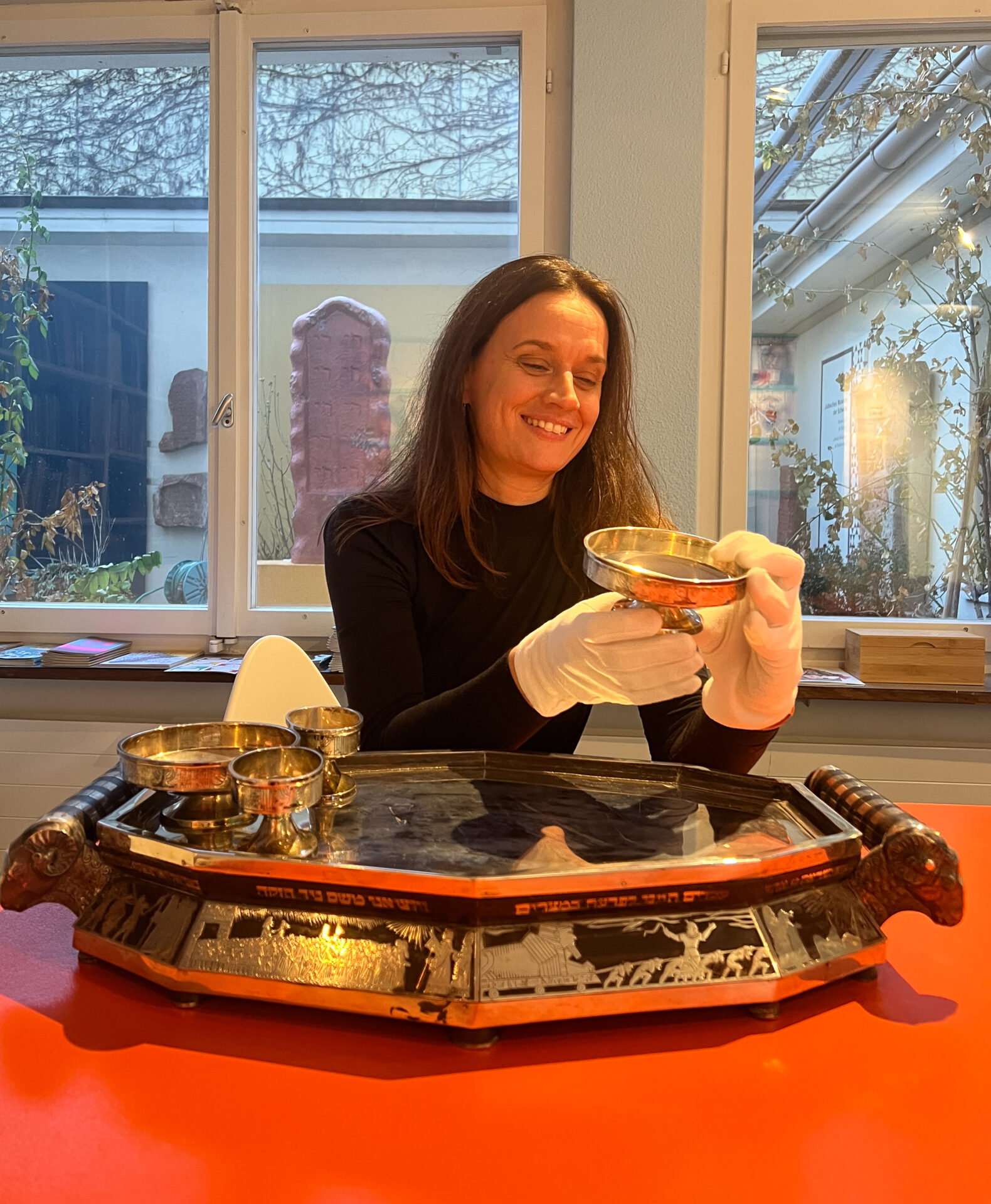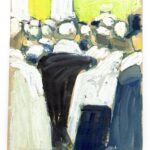Dinah Ehrenfreund at the Jewish Museum of Switzerland
Bernhard Friedländer, Seder Plate, Düsseldorf, 1913-1926, JMS 529.
Bernhard Friedländer, Lulav- and Etrog Holder, Düsseldorf or Tel Aviv 1925-1940, JMS 764
Bernhard Friedländer, Jug for Kiddush-Wine, Düsseldorf 1913-1926, JMS 1550.
«I’m curious about unusual design.»
Dinah Ehrenfreund on Bernhard Friedländer
Curator Dinah Ehrenfreund identified three works by Bernhard Friedländer, a nearly-forgotten silversmith, in the Jewish Museum’s collection. Museum director Naomi Lubrich asked her about Friedländer’s significance for the history of Judaica design and about posthumously recognizing artists who have been unduly forgotten.
Naomi Lubrich: Dear Dinah, you identified works of the silversmith Bernhard Friedländer in our Judaica collection. Who was he?
Dinah Ehrenfreund: Bernhard Friedländer was born around 1880 in Czenstochau, in what is now Poland. He trained as a goldsmith, silversmith and stone setter in Łódź, Odesa, Tbilisi and Berlin. From 1904, he worked in Germany, with stops in Berlin, Munich, Essen and Bonn. In 1913, he set up his own business in Düsseldorf and produced unique Judaica, both for private use and for synagogues. He was well-received: his works were shown in exhibitions such as the GeSoLei in Düsseldorf in 1926, in the USA in 1927 and at the Kult und Form exhibition in various cities from 1930 onwards. He was applauded in newspapers and encyclopaedias. His most creative period was in Düsseldorf from 1913 to 1928. In 1928 he moved to Antwerp, and in 1932 he emigrated to Tel Aviv in what was then Mandate Palestine. Besides some unique chanukka lamps, he produced large numbers of Judaica and silverware – mass-produced goods, if you will. Friedländer died in 1941.
NL: Bernhard Friedländer is little-known today. Why?
DE: Bernhard Friedländer’s most sophisticated works remained in Germany and were destroyed during the Nazi era. In Tel Aviv, he made candlesticks, chanukka lamps, kiddush cups and silverware, which were less unusual. Some people, especially Israelis, know his firm, Michsaf, which still exists today. But few know it was founded by Friedländer, who sold it long before he died. A last reason is Friedländer’s somewhat early death in 1941, at age sixty. By contrast, Yehuda Wolpert, who worked in Friedländer’s Tel Aviv workshop for two years and then as a teacher at the Bezalel Academy of Art and Design, lived until 1981. Wolpert also found much acclaim for the modern works he created. Today, Wolpert is remembered as the inventor of modern Judaica. But Wolpert’s reception overlooks the innovative work of many artists in Germany before 1938, such as Bernhard Friedländer.
NL: You studied a seder plate in the JMS collection. What is special about it?
DE: The seder plate dates from 1925/26 and has an unusual decagonal, ten-sided shape. Illustrations of biblical, historical and modern scenes flank the edges. The Hebrew inscriptions are literary references. You could talk about this piece at the centre of the seder table all evening!
NL: So your interest in Bernhard Friedländer is not purely an aesthetic preference.
DE: No. I’m interested in the stories behind the objects, how they found their way into the museum collection and what how they were previously used. I’m less interested in a particular aesthetic taste. I’m very curious about unusual design, such as Bernhard Friedländer’s Judaica.
NL: Dinah, thank you for your insight into Judaica design!
verfasst am 05.02.2024





